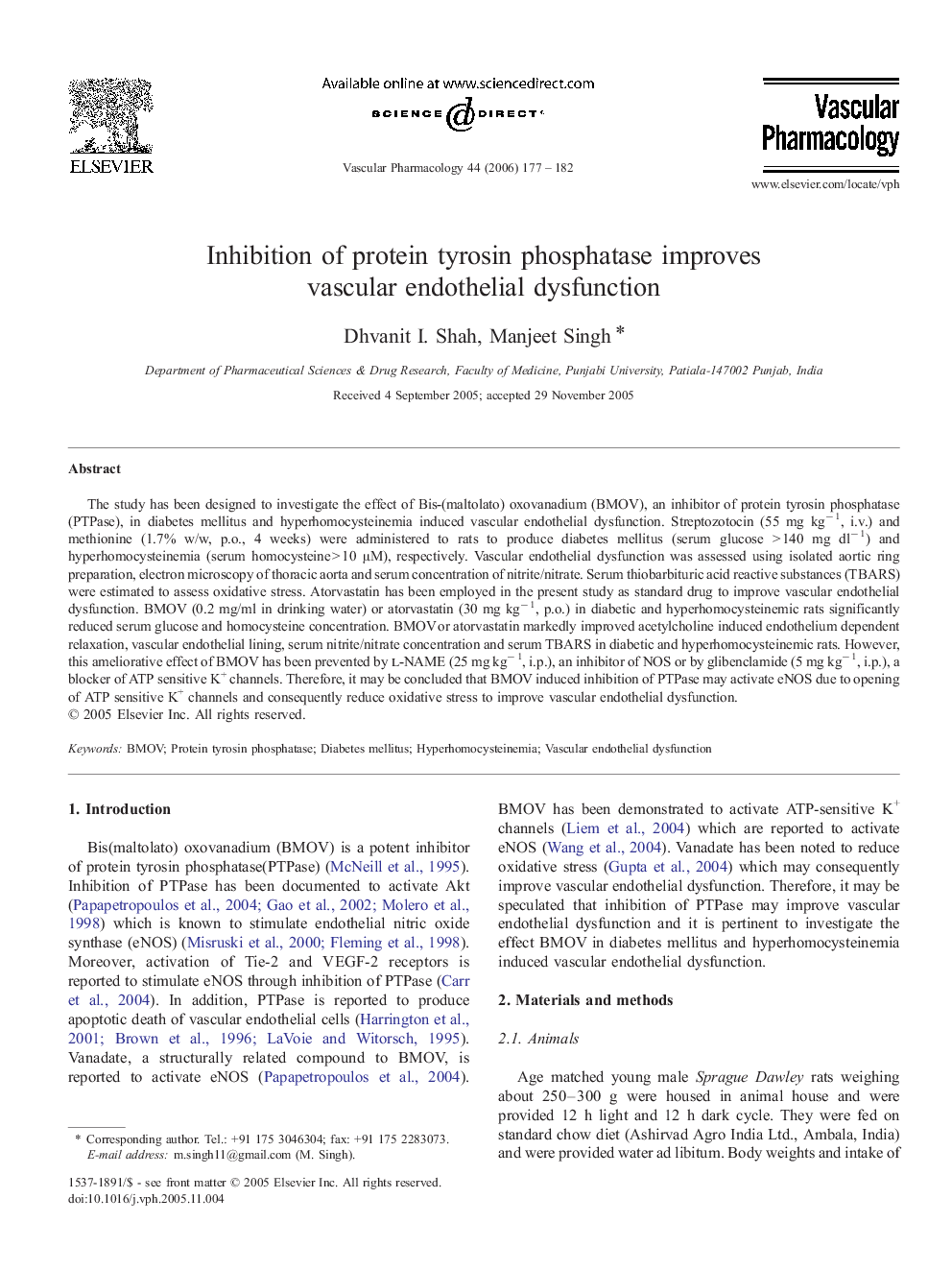| Article ID | Journal | Published Year | Pages | File Type |
|---|---|---|---|---|
| 2574819 | Vascular Pharmacology | 2006 | 6 Pages |
Abstract
The study has been designed to investigate the effect of Bis-(maltolato) oxovanadium (BMOV), an inhibitor of protein tyrosin phosphatase (PTPase), in diabetes mellitus and hyperhomocysteinemia induced vascular endothelial dysfunction. Streptozotocin (55 mg kgâ 1, i.v.) and methionine (1.7% w/w, p.o., 4 weeks) were administered to rats to produce diabetes mellitus (serum glucose > 140 mg dlâ 1) and hyperhomocysteinemia (serum homocysteine > 10 μM), respectively. Vascular endothelial dysfunction was assessed using isolated aortic ring preparation, electron microscopy of thoracic aorta and serum concentration of nitrite/nitrate. Serum thiobarbituric acid reactive substances (TBARS) were estimated to assess oxidative stress. Atorvastatin has been employed in the present study as standard drug to improve vascular endothelial dysfunction. BMOV (0.2 mg/ml in drinking water) or atorvastatin (30 mg kgâ 1, p.o.) in diabetic and hyperhomocysteinemic rats significantly reduced serum glucose and homocysteine concentration. BMOV or atorvastatin markedly improved acetylcholine induced endothelium dependent relaxation, vascular endothelial lining, serum nitrite/nitrate concentration and serum TBARS in diabetic and hyperhomocysteinemic rats. However, this ameliorative effect of BMOV has been prevented by l-NAME (25 mg kgâ 1, i.p.), an inhibitor of NOS or by glibenclamide (5 mg kgâ 1, i.p.), a blocker of ATP sensitive K+ channels. Therefore, it may be concluded that BMOV induced inhibition of PTPase may activate eNOS due to opening of ATP sensitive K+ channels and consequently reduce oxidative stress to improve vascular endothelial dysfunction.
Related Topics
Health Sciences
Medicine and Dentistry
Cardiology and Cardiovascular Medicine
Authors
Dhvanit I. Shah, Manjeet Singh,
